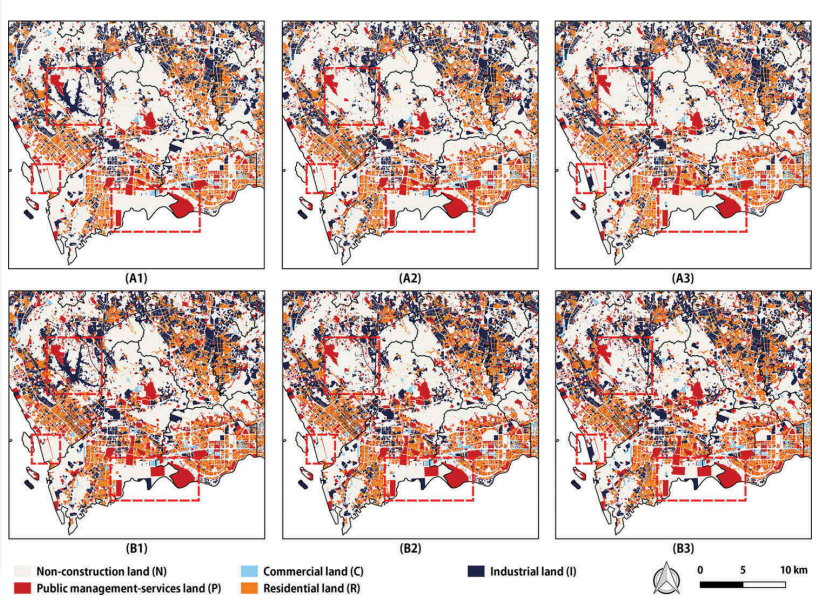Abstract
Cellular automata (CA) have been widely used to simulate complex urban development processes. Previous studies indicated that vector-based cellular automata (VCA) could be applied to simulate urban land-use changes at a realistic land parcel level. Because of the complexity of VCA, these studies were conducted at small scales or did not adequately consider the highly fragmented processes of urban development. This study aims to build an effffective framework called dynamic land parcel subdivision (DLPS)-VCA to accurately simulate urban land-use change processes at the land parcel level. We introduce this model in urban land-use change simulations to reasonably divide land parcels and introduce a random forest algorithm (RFA) model to explore the transition rules of urban land-use changes. Finally, we simulate the land-use changes in Shenzhen between 2009 and 2014 via the proposed DLPS-VCA model. Compared to the advanced Patch-CA and RFA-VCA models, the DLPS-VCA model achieves the highest simulation accuracy (Figure-of-Merit = 0.232), which is 32.57% and 18.97% higher respectively, and is most similar to the actual land-use scenario (similarity = 94.73%) at the pattern level. These results indicate that the DLPS-VCA model can both accurately split the land during urban land-use changes and signifificantly simulate urban expansion and urban land-use changes at a fifine scale. Furthermore, the land-use change rules that are based on DPLS-VCA mining and the simulation results of several future urban development scenarios can act as guides for future urban planning policy formulation.

Q.E.D.









